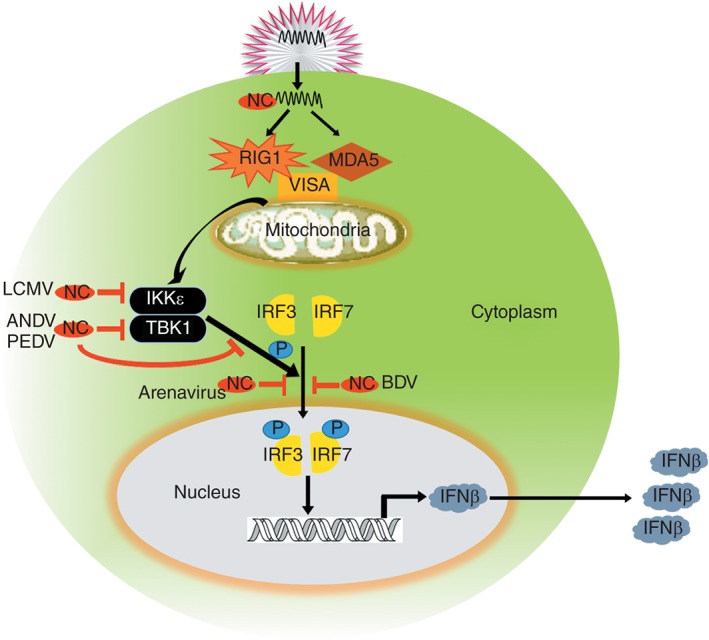Figure 3.

Viral nucleocapsid proteins (NCs) interfere with several stages of innate immune signaling. When RNA viruses infect cells, retinoic acid‐inducible gene I (RIG1) and melanoma differentiation‐associated gene 5 (MDA5) respond to the viral RNA and then activate the adaptor protein located on the mitochondria virus‐induced signaling adapter (VISA), and VISA passes the signal to TANK‐binding kinase 1 (TBK1) and IκB kinase‐related kinase (IKKε), both of which are phosphokinases that can phosphosphorylate IFN‐regulated factor 3 (IRF3) and interferon regulatory factor 7 (IRF7). Finally, phosphorylated IRF3 and IRF7 translocate into the nucleus to activate interferon (IFN) promoter and lead to the production of IFN. Several viral NCs can block the IFN signal transfer; lymphocytic choriomeningitis virus (LCMV) NCs can block the IFN signal transfer through interfere the function of IKKε; NCs of Andes virus (ANDV) and porcine epidemic diarrhea virus (PEDV) inhibit IFN signal by interfering with function of TBK1 and IRF3; Arenavirus NCs prevent IRF3 from localizing to nucleus and Borna diseae virus (BDV) NCs prevent IRF7 from localizing to nucleus.
